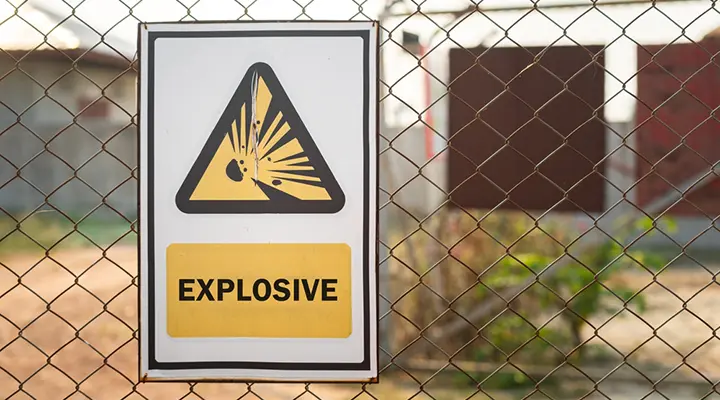A lone worker is defined as someone who works by themselves, without close or direct supervision.
Lone workers are exposed to similar hazards at work as those who work alongside colleagues. But lone workers are at greater risk of harm from these hazards because they often have no one to support them immediately if something goes wrong.
People working alone may find themself in a situation where they are unable to alert someone for help, or they may be at a great distance from help. This makes it difficult to get the response they need in an emergency situation such as an accident, sudden illness or attack.
Lone workers are those who:
- work alone away from a fixed workplace
- work in the same building or site as their colleagues but cannot be seen or heard by them
- work outside of regular working hours
- work alone with members of the public or in populated areas
- work from home
- travel alone during work hours
- are left alone for periods of time such as when their colleague takes a break
This article explains the risks of lone working, identifies typical roles and outlines the hazards of working alone.
What are the risks of lone working?
The risks that lone workers face will vary according to the industry they work in, and their job role.
The most common risks that affect lone workers typically fall into three categories:
1. People Risk
People risk occurs when you work with or near people who pose a potential danger.
Anyone who works in a role that requires them to frequently engage with the public or do work in individuals’ homes may be exposed to violence, aggression or theft.
Statistics from the British Crime Survey show that every day around 150 lone workers are assaulted, both physically and verbally.
The risk of violence and aggression is likely to be higher for those who:
- work late at night or early in the morning
- have authority over customers and have to enforce rules
- work with or near people who are under the influence of alcohol or drugs
- carry money, valuable equipment or goods
2. Environmental risk
An environmental risk is present when the workplace itself poses a risk to a person’s health or safety.
For example, an environmental risk may be present to those who:
- work outdoors and may be exposed to hazards such as harsh weather, icy roads, difficult terrain or poor visibility, which increases the risk of slips, trips or falls.
- work alone in rural and isolated areas with limited or no mobile phone reception and may be unable to call for help in an emergency.
- work from home without any interaction during the day, which increases the risk of overwork, burnout, work-related stress or loneliness.
3. Task-based risk
Task-based risk arises from the nature of the task being performed.
These risks may be present to those who:
- Work at height when no one is around. If an accident occurs, a lone worker could be left without help for a long time.
- Manually handle heavy or awkwardly shaped objects alone, which can lead to both immediate injury or long-term musculoskeletal disorder.
- Operate machinery and heavy equipment alone. This puts a lone worker at risk of machinery crushing or causing major injuries to limbs.
- Spend long periods driving alone, which can affect workers’ ability to drive safely.
Example of lone workers

Lone workers exist in all industries and almost any job role can involve an element of working alone.
Cleaners – Work out of sight and sound
Most workplaces will have a team of cleaners who work out of normal office hours. It will be normal for cleaners to be out of contact with each other, working at completely different ends of a building. Due to working out of normal office hours, less staff will be present and should an incident occur, such as slipping over, heart attack or tripping over a cable, there may not be other people around to call out to or go to for help.
Security guard – Work outside of regular work hours
A security guard will often be on premises that are in a remote location, like a warehouse or construction site that is isolated from other people. They can work out of regular working hours and on small sites there could only be 1 or 2 on duty. Colleagues may be on hand via a radio, but more often than not, if a situation arises the guard will have to deal with it alone.
Social worker – Visit clients in their homes
As part of their normal day-to-day activities, social workers often make house visits. Whether supporting a family with a difficult child or visiting someone on probation, social workers are often alone and aren’t always welcome. Social workers do come face-to-face with confrontation and in 2022 a report by UNISON stated that over 40% of social work staff in the UK said they had faced abuse from service users, their families or members of the public.
Parking warden – Work alone in public spaces
Parking wardens usually work alone and although they work in public spaces, they often come face-to-face with disgruntled drivers who have, or are about to have, a penalty notice issued to them. It is not uncommon for traffic wardens to be assaulted or receive verbal abuse while trying to carry out their duties.
HGV drivers – Travel alone during work hours
HGV drivers are mostly alone during their working day and are an obvious example of lone working. Their job requires high concentration and fatigue can lead to serious accidents. Not only this but the goods that they are transporting could be a target for criminals. With laybys usually in remote places, if a driver falls from the cab or is attacked by criminals, they could be a long way from help.
Lone workers’ responsibilities
Lone workers have a duty to co-operate with their employer. This means that they must follow any health and safety policies and control measures that are put in place. Also, they must never knowingly put themself or other people in danger.
Employers will provide appropriate information, instruction and training about safety precautions before allowing workers to work alone.
Finally, if workers spot any safety issues or have an accident, near-miss, or any other potentially hazardous situation, they must inform their employer, supervisor, or health and safety representative.
Looking for Lone Worker training?
Our CPD-certified Lone Worker training course is only £15 plus VAT. It is ideal for anyone who works alone without close or direct supervision.
This course explains the hazards associated with lone working and identifies simple, sensible precautions to take to keep safe when working alone.
Have a question? Just contact us on 0333 577 5016 or sales@i2comply.com and our support team will be happy to help.



